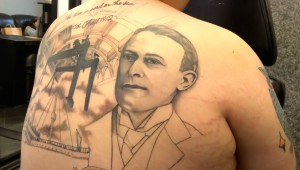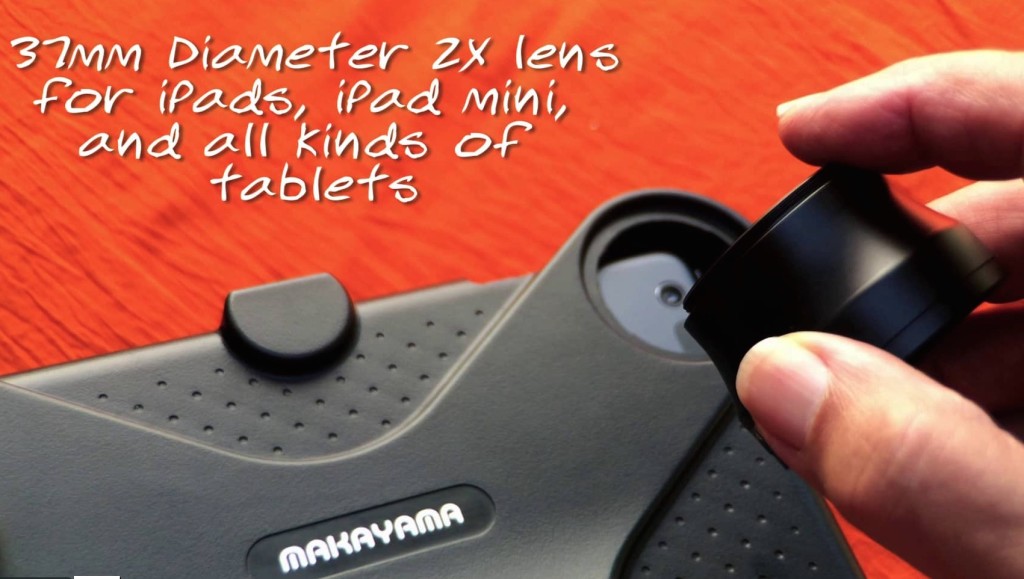Philip Bromwell is one of the world’s leading practitioners of mobile video journalism. Originally trained to use traditional video cameras, for several years he’s been experimenting with smartphones. Actually, he does more than experiment. RTÉ, the Irish television network, has broadcast a number of Bromwell’s smartphone-shot reports, such as the informative and cinematically rich “The Hidden Hoard.”
RTÉ hosted MoJoCon, the world’s first international conference devoted to mobile journalism and mobile filmmaking in Dublin earlier this year. Bromwell was one of the speakers at MojoCon, an event which brought mobile pioneers and enthusiasts from all over the world to Ireland.
In the following interview, Bromwell makes the case for using mobiles to shoot professional video reports, and offers advice that can help novices elevate their game.
MMM: What led RTÉ to become interested in Mobile Video Journalism?
Bromwell: Four years ago my colleague Glen Mulcahy, Innovation Lead at RTÉ, began developing the idea of mobile video journalism. He began looking at how our newsroom could harness smartphones to create content, cover stories in new ways and reach our audience on emerging social platforms.
MMM: And how did you fit in to this initiative?
Bromwell: I had been working as a video journalist (shooting and editing my own stories) for more than a decade, but I was becoming more and more interested in finding new ways to tell stories. After attending Glen’s one-day, in-house training session, my eyes were opened to the possibilities of MoJo. I had a feature story lined up, but decided to shoot it on my iPhone 4S, instead of my Sony EX3. I enjoyed the challenge and I was impressed by the results. Thankfully my colleagues were too.
MMM: When was this?
Bromwell: In September 2013. Since then I’ve shot a number of reports on my iPhone, all of which have been broadcast on our main bulletins. I still work as a traditional video journalist, but MoJo—using the smartphone—has become a big part of my job. I now have the responsibility for developing MoJo within our newsroom and I’m involved in MoJo training in RTÉ and in Europe.
MMM: What advantages do you see in shooting a report using a smartphone?
Bromwell: It’s important to stress that we don’t see the smartphone as an alternative to traditional production methods, but rather as a complementary tool. But once you start to maximise its potential, it’s quite a tool! UK Mojo expert Mark Egan refers to the iPhone as “the Swiss Army Knife of news gathering.”
MMM: What does that mean?
Bromwell: How many other “cameras” would allow me to shoot and edit a story, go live on location and connect me directly to our audience via social media? Plus, it’s the camera I ALWAYS have with me. I’m continually impressed with the quality of the pictures, particularly the sharpness of close-ups. I’ve enjoyed the challenge of “re-thinking” how I approach the story, using this different device.
Sample close-ups from Philip Bromwell video reports
MMM: Has your audience commented on this technological development?
Bromwell: We’ve achieved such a high quality that the audience remains unaware of the production methodology.
MMM: What types of videos do you create using the smartphone or tablet?
Bromwell: We are shooting news stories for national news bulletins.
MMM: Are there disadvantages to using mobile devices for video reports?
Bromwell: For one thing, you can’t really zoom without spoiling your pictures. That’s why we encourage the idea of “zooming with your feet.” Also the mobile camera inevitably struggles in low light. You try to work within the limitations to produce the maximum result.
MMM: In the future will most video journalism be shot using mobiles?
Bromwell: Technology is moving so quickly that I’m reluctant to make predictions. Because the next generation of mobiles will be more powerful, MoJo should continue to gain traction. Ultimately I favor a “mixed economy” newsroom, with multiple cameras deployed to capture and deliver stories to multiple platforms. Journalists need to be multi-skilled and capable of using all sorts of cameras for taking both video and stills.
MMM: Where do the ideas for your reports come from?
Bromwell: I originate some projects. Others are assigned. I’m fortunate that I get to work on a broad range of topics at home and abroad. I’ve covered the Syrian refugee crisis, the Oscars, the Olympics, and last year Tibet. Whatever the story, I’m always interested in the visuals.
MMM: How do you develop the concept for a video piece?
Bromwell: I start with a broad idea of the story. The details emerge when shooting. One of the challenges of being a “one-man-band” is to keep track of the story while I’m filming. I’m always prepared to tell a different story than the one I started out on.
MMM: How much footage do you shoot for a report of about a minute or two?
Bromwell: If I’m up against a tight deadline I’ll shoot less material than if shooting a story for the next day. On average I shoot 25-30 minutes. I like to give myself plenty of options in the edit.
MMM: What about lighting?
Bromwell: I always try to use the available light. In our RTÉ MoJo kits we do have a small Metz mecalight LED, which I may deploy for interviews.
MMM: Do you prefer using a tripod or hand-holding the smartphone?
Bromwell: Mostly I use a tripod. I’m aiming for well-composed, steady shots with the action taking place within the frame. No pans, zooms or tilts!
MMM: Any thoughts about developing the videographer’s eye?
Bromwell: Take photographs with your smartphone as this will definitely help you when you’re shooting video.
MMM: What about audio?
Bromwell: I use the iPhone’s mic to record natural sound, and then I use an external mic for interviews.
MMM: Are there secrets to creating a compelling voice over?
Bromwell: Write as you speak, aiming for a natural, conversational tone. Write short sentences, following the guideline “less is more.” Write to your pictures. And remember that stories need a beginning, a middle and an end.
MMM: What happens when things go wrong?
Bromwell: I tell my colleagues that MoJo is about “workflows and workarounds.” One of my MoJo stories (“The Hidden Hoard”) was meant to be a VJ shoot. When I took my Sony EX3 out of the car I discovered it wasn’t working. Fortunately I had my MoJo kit with me, so I had an alternative. You have to be prepared to problem-solve along the way. And to learn from the experience of failing. I’ve greatly benefitted from sharing my stories on social platforms, which have brought them to the attention of MoJo pioneers around the world. Their feedback helps inform the next shoot.
MMM: Could you comment on the editing step?
Bromwell: We recommend editing tv pieces in Pinnacle Studio. That said, I’ve been using iMovie a lot to produce short-form videos for our social platforms. I’m also a big fan of collage apps like PicPlayPost and Diptic.
MMM: When you started out—before the advent of MoJo, how did you develop your video journalism skills?
Bromwell: I was one of hundreds of BBC staffers who took Michael Rosenblum’s video journalism training course. Much of what he taught me applies to my solo MoJo work. Being a “one-man-band” isn’t for everybody, but for me it has been a hugely enjoyable, liberating and interesting career.
MMM: Do you have advice for someone who’d like to be part of mobile video journalism?
Bromwell: Shoot and tell the stories that matter to you. And share them on multiple platforms. Learn to do the simple things well. And always keep in mind Beckett’s well-known phrase: “Try again. Fail again. Fail better.”
* * *
Those interested in keeping up with this fast-changing field might bookmark http://mojocon.rte.ie. That’s the place to find out about MoJoCon2, which may take place in 2016. You’ll find more of Bromwell’s work on his Vimeo page.





 Previous post
Previous post
 Next post
Next post






This article has been an enormous help to me. Thank you so much for posting. I was interested in your comment about sharing on social platforms. Do you edit the videos again for different platforms?..for example twitter would surely require a much shorter video and what questions do you ask yourself when distilling? Thanks Phil….see you at Mojocon again.